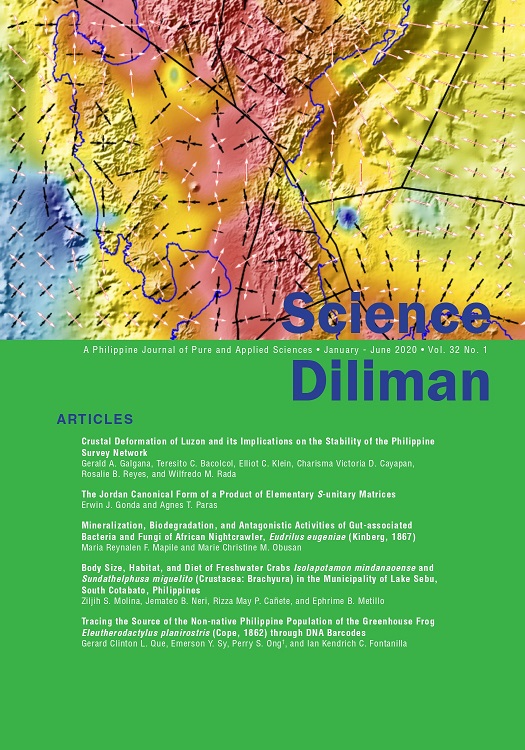Crustal Deformation of Luzon and its Implications on the Stability of the Philippine Survey Network
Abstract
Tectonic deformation displaces the physical positions of regional or national coordinate reference system and/or survey network reference markers quite significantly when situated within fast-deforming, seismically active Plate Boundary Zone (PBZ) regions. Due to unusually high station velocities that reflect high strains near and within active PBZs, the coordinate positions of such survey reference markers need to be re-evaluated within short time spans to remain useful. Such rapid changes must be measured to assess the nature of deformation, and then construct models to accurately quantify changes and then apply proper component corrections (i.e., in-between surveys) in order to maintain the spatial integrity of geodetic networks as a function of time. To determine the effects of regional tectonic deformation on existing survey networks, we evaluate the GPS velocity field gathered from GPS stations situated in Luzon, a region sandwiched between two active, opposing subduction zones: the Manila Trench and the Philippine Trench. This region is traversed by numerous active faults such as the Philippine Fault System, and the (Marikina) Valley Fault System. Using GPS observations, we model the Luzon region as made up of independently rotating but interacting tectonic microplates or blocks, separated by active faults. We then quantify the individual contributions of tectonic block rotation and transient elastic locking strain to estimate the overall deformation field that affects the Philippine Survey Network from its establishment in 1992-1993 to the present. Our preferred block model results show that most stations have been affected by >1 m displacement, with a handful having ~2 m of accumulated displacement in the Sundaland reference frame from their observed initial positions in 1993. Differential inter-block motions of stations dictate that stations need to be reobserved at shorter time spans. Continuum models of residual strain rates further reveal regions of complex internal deformation that may further exacerbate the geometric instability of existing geodetic networks.
Published
2020-09-17
How to Cite
GALGANA, Gerald A. et al.
Crustal Deformation of Luzon and its Implications on the Stability of the Philippine Survey Network.
Science Diliman: A Journal of Pure and Applied Sciences, [S.l.], v. 32, n. 1, sep. 2020.
ISSN 2012-0818.
Available at: <https://journals.upd.edu.ph/index.php/sciencediliman/article/view/7223>. Date accessed: 02 oct. 2025.
Issue
Section
Articles
Keywords
Geodesy, Crustal Deformation, Luzon, active tectonics, geodynamics, surveying
Submission of a manuscript implies: that the work described has not been published before (except in the form of an abstract or as part of a published lecture, review, or thesis); that it is not under consideration for publication elsewhere; that its publication has been approved by all co-authors, if any, as well as by the responsible authorities at the institute where the work has been carried out; that, if and when the manuscript is accepted for publication, the authors agree to the automatic transfer of the copyright to the publisher; that the manuscript will not be published elsewhere in any language without the consent of the copyright holders; that written permission of the copyright holder is obtained by the authors for material used from other copyrighted sources; and that any costs associated with obtaining this permission are the authors’ responsibility.



